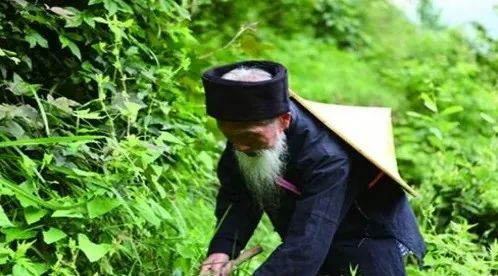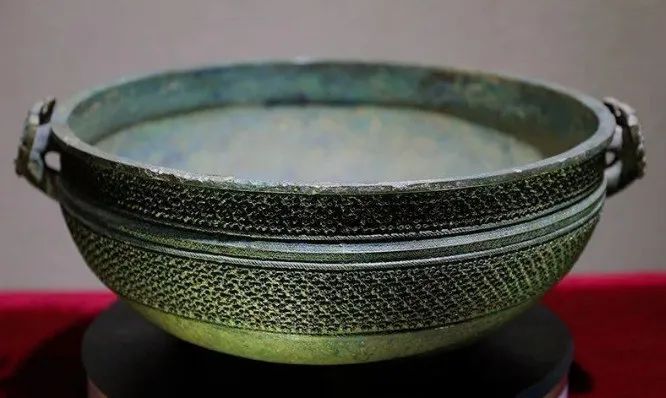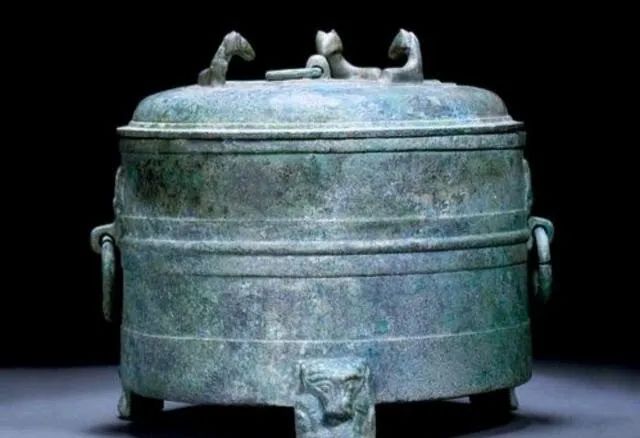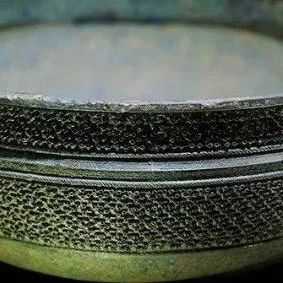In 1983, a farmer from Luoding unearthed a large basin while digging for herbs. He intended to clean it and take it home for storage, but cultural survey personnel passing by were astonished and exclaimed, causing the farmer to panic and flee, thinking they were trying to steal it.

On a clear autumn morning in 1983, Brother Zhang from Luoding County carried a hoe up to Beifu Mountain. He planned to dig up some herbs to supplement his family’s income, but inadvertently changed the course of archaeology in Lingnan.
While digging for herbs, Brother Zhang suddenly struck a heavy “basin”. Its surface was rusty, revealing some greenish-blue underneath.
He speculated it might be an abandoned metal utensil and thought to himself, “If I clean this up, it would be perfect for storing grain.”
Thus, he moved the “basin” to the riverside of Shalang River at the foot of the mountain, washing it while examining its strange patterns. At that moment, the Luoding County cultural relics survey team happened to pass by. From a distance, the team members caught sight of the “basin” and their expressions changed dramatically. One of them exclaimed, “That is a bronze artifact!” As soon as the words left his mouth, Brother Zhang jumped up and ran away with the “basin”. He thought these people were there to steal it, unaware that he had discovered a significant treasure. After catching up with him, the survey team patiently explained, “This is a bronze artifact from the Warring States period, a national cultural relic.”
Only then did Brother Zhang cautiously return to the discovery site and point out the exact location of the “basin”—the southwest slope of Beifu Mountain. Beifu Mountain is a small hill located in Sha Tou Village, Luoding, with excellent feng shui, backed by mountains and facing water. Local villagers often dig for herbs or plant crops here, but no one expected that an ancient tomb from the Warring States period was buried beneath. Based on Brother Zhang’s identification, the archaeological team quickly began exploration and discovered that the tomb measured approximately 4 meters long, 2 meters wide, and 2.3 meters deep. The bottom of the tomb was solid, even featuring a “waist pit”, a typical characteristic of Chu culture tombs. Even more astonishing was the discovery of over a hundred burial items, primarily bronze artifacts, including chime bells, bronze mirrors, and bronze human-headed pillar vessels.

These artifacts were not only numerous but many were also discovered for the first time in Guangdong. Particularly, the bronze human-headed pillar vessel, which bore the character “王” (Wang, meaning king), led experts to speculate that the tomb’s owner might have been a leader of the Baiyue tribe, or even a local king. The discovery of the Beifu Mountain Warring States tomb has elevated archaeology in the Lingnan region to a new height.
In contrast, tombs in the Central Plains are generally more ornate, with burial items found in sets, such as the chime bells from the Shang and Zhou dynasties that emphasize uniformity in scale, while the six chime bells from Beifu Mountain varied in shape, suggesting they were not part of a single set. Does this irregularity indicate an innovation in the Baiyue culture’s approach to the Central Plains’ ritual music system? Or were these artifacts once war trophies? These questions remain unresolved. Such cultural integration is not an isolated case. The bronze sacred tree and human figures discovered at the Sanxingdui site exhibit both religious significance and reflect exchanges with Central Plains civilization. Similarly, the artifacts unearthed from Beifu Mountain, such as the Hu bronze spear and beast-eared bronze mirror, also reflect the profound influence of Chu culture on the Lingnan region.
However, while Sanxingdui showcases mysterious religious rituals, the artifacts from Beifu Mountain emphasize practical use and symbols of power. Archaeologists have further traced the historical context of Lingnan, discovering a strong continuity of culture in this land.
From the Paleolithic site of Motiaoshan to the Beifu Mountain Warring States tomb, Lingnan civilization has not only been influenced by the Central Plains but has also retained its uniqueness. This characteristic is particularly evident in the bronze human-headed pillar vessel: its design embodies both the totem worship of Baiyue culture and the symbols of power from Chu culture, with the character “王” (Wang) cast on the pillar revealing the noble status of the tomb’s owner. However, many unsolved mysteries remain.

Why are the bronze vehicle ornaments found in the tomb lacking the remains of a complete vehicle? Were these war trophies, or merely symbolic items buried with the deceased? Additionally, why do the chime bells vary in shape? Archaeologists plan to conduct metal composition analysis to trace the origins of these items and utilize modern technology to restore their manufacturing techniques. Future research will also focus on the interaction between Lingnan and Central Plains cultures. Archaeologists hope to outline the cultural network between the Baiyue tribes and the Chu region during the Warring States period through systematic excavations in the Nanjiang River basin. They also plan to study the social structure of the Beifu Mountain ancient tomb, exploring the rise and fall of the state to which the tomb owner belonged. How did regional powers emerge? Why did they vanish in the course of history? The answers to these questions may be hidden beneath the ruins of Beifu Mountain. The significance of the Beifu Mountain Warring States tomb lies not only in enriching the archaeological landscape of the Lingnan region but also in providing a new perspective for understanding the diverse and unified civilization of ancient China.
This small hill now carries countless unsolved mysteries, waiting for archaeologists and historians to unveil its secrets.

